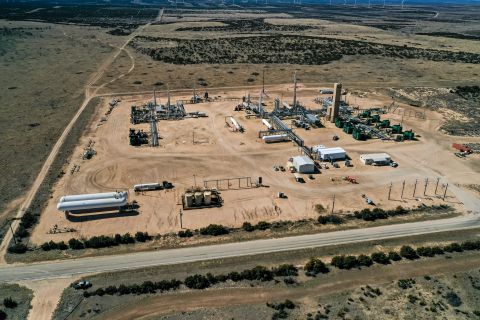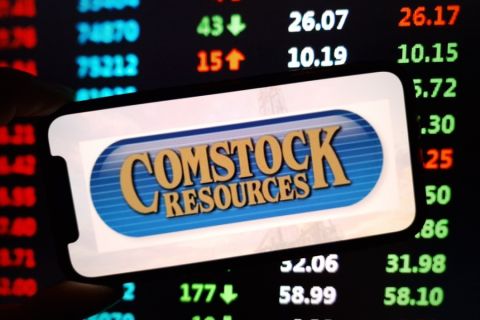It is not uncommon to walk into a room where oil and gas professionals have gathered and quickly see that men greatly outnumber women. The gender imbalance in the energy industry has been present for decades and could worsen as older workers began to retire if companies aren't successful in stepping up recruitment. Efforts to change the image of the energy sector being a male-dominated profession have sprouted in various places as companies seek to diversify their workforces and professional organizations strive to make sure the next crop of engineers, geologists, scientists, etc., includes women. And the effort is worth it. A more diversified workforce enables companies to benefit from a wider range of ideas, skill sets, and other contributions. A group called Women’s Energy Network is doing its part to encourage more young women to enter the energy profession. The organization’s Young Women Energized program targets high school students by pairing them with professional women with jobs in the energy sector. The primary goal of the program is first to encourage high school girls to continue their education through college; secondly, take courses in science and math; and ultimately, consider a career in the energy field, said Amy Allen, director of community initiatives for the Women’s Energy Network. She believes the low number of women in the energy field goes back to declining interest in subjects such as math and science. In elementary school, girls are typically just as interested in math and science as boys; however, after elementary school, interest among the girls tends to wane. “We have a lot of feedback from universities that women tend not to focus in science, engineering, and math,” she said. “We want to encourage and show young women that there are other women who are doing these jobs very successfully and are able to make good career paths for themselves.” The annual program will take place Oct. 25. On this night, each table has an adult host and about 10 girls. The hosts are women in the energy industry whose jobs cover a wide range, including lawyers, geoscientists, and engineers as well as environmental health and safety professionals. The hosts share insight on their career paths, daily job duties, and work-life balance among other topics of interest to the students. The program is geared toward high school juniors and seniors; however, a new program this year will focus on high school freshmen and sophomores, Allen said. Also, new this year is student chapters at two local universities – University of St. Thomas and Rice University – to introduce women to the energy industry. Another program offered is tailored to parents seeking more information on how to help their children get scholarships and learning more from recent energy sector graduates about the college experiences. After speaking with Allen, I was reminded of a recent interview I conducted with Catherine Snelson, a Nevada scientist. She shared the story of how her love for science and math evolved into a career in seismology. She recalled how being into math and science “wasn’t cool” when she was in high school and how her family encouraged her to follow her dreams. She did and now has some pretty amazing stories to share about her days at work. There are more women like her in the field, but there could be thousands more. It still amazes me when I come across a press release announcing another “first woman” or “first female” executive or director. This is 2012, and I wish these milestones were reached decades ago. But I still smile, then quietly say, “You go, girl!” I think of all of the women I work with and those I have encountered in this industry and am thankful that these milestones are finally being reached. It shows that progress is being made, and that is a good thing. Kudos to the Women’s Energy Network and Young Women Energized, which is in its ninth year, for encouraging women to consider oil and gas careers as well as offering scholarships. Anyone interested in learning more about the Women’s Energy Network or joining the effort should visit www.womensenergynetwork.org. Contact the author, Velda Addison, at vaddison@hartenergy.com.
Recommended Reading
Midstream M&A Adjusts After E&Ps’ Rampant Permian Consolidation
2024-10-18 - Scott Brown, CEO of the Midland Basin’s Canes Midstream, said he believes the Permian Basin still has plenty of runway for growth and development.
Post Oak-backed Quantent Closes Haynesville Deal in North Louisiana
2024-09-09 - Quantent Energy Partners’ initial Haynesville Shale acquisition comes as Post Oak Energy Capital closes an equity commitment for the E&P.
Analyst: Is Jerry Jones Making a Run to Take Comstock Private?
2024-09-20 - After buying more than 13.4 million Comstock shares in August, analysts wonder if Dallas Cowboys owner Jerry Jones might split the tackles and run downhill toward a go-private buyout of the Haynesville Shale gas producer.
Aethon, Murphy Refinance Debt as Fed Slashes Interest Rates
2024-09-20 - The E&Ps expect to issue new notes toward redeeming a combined $1.6 billion of existing debt, while the debt-pricing guide—the Fed funds rate—was cut on Sept. 18 from 5.5% to 5%.
Dividends Declared Sept.16 through Sept. 26
2024-09-27 - Here is a compilation of dividends declared from select upstream, midstream and service and supply companies.





